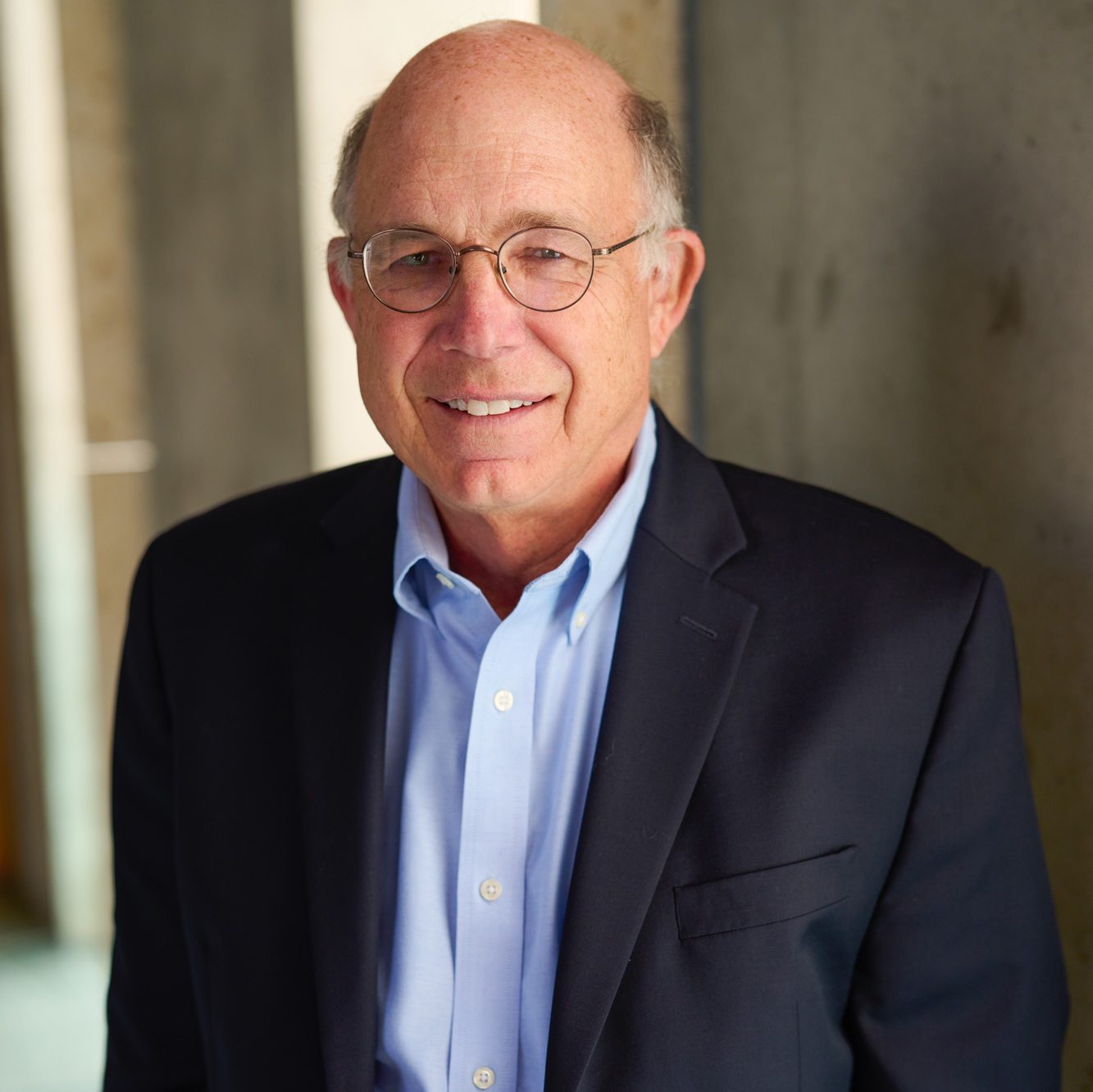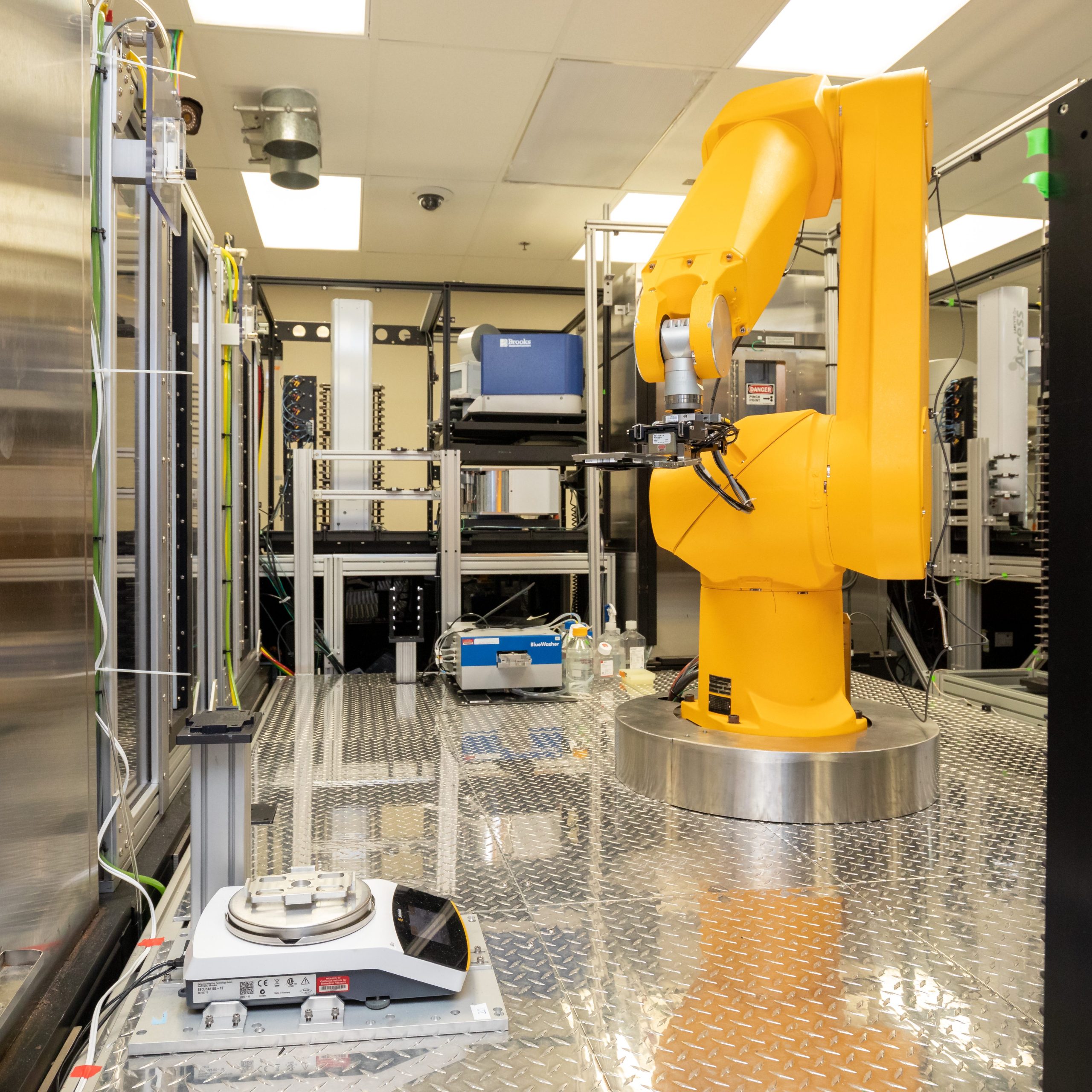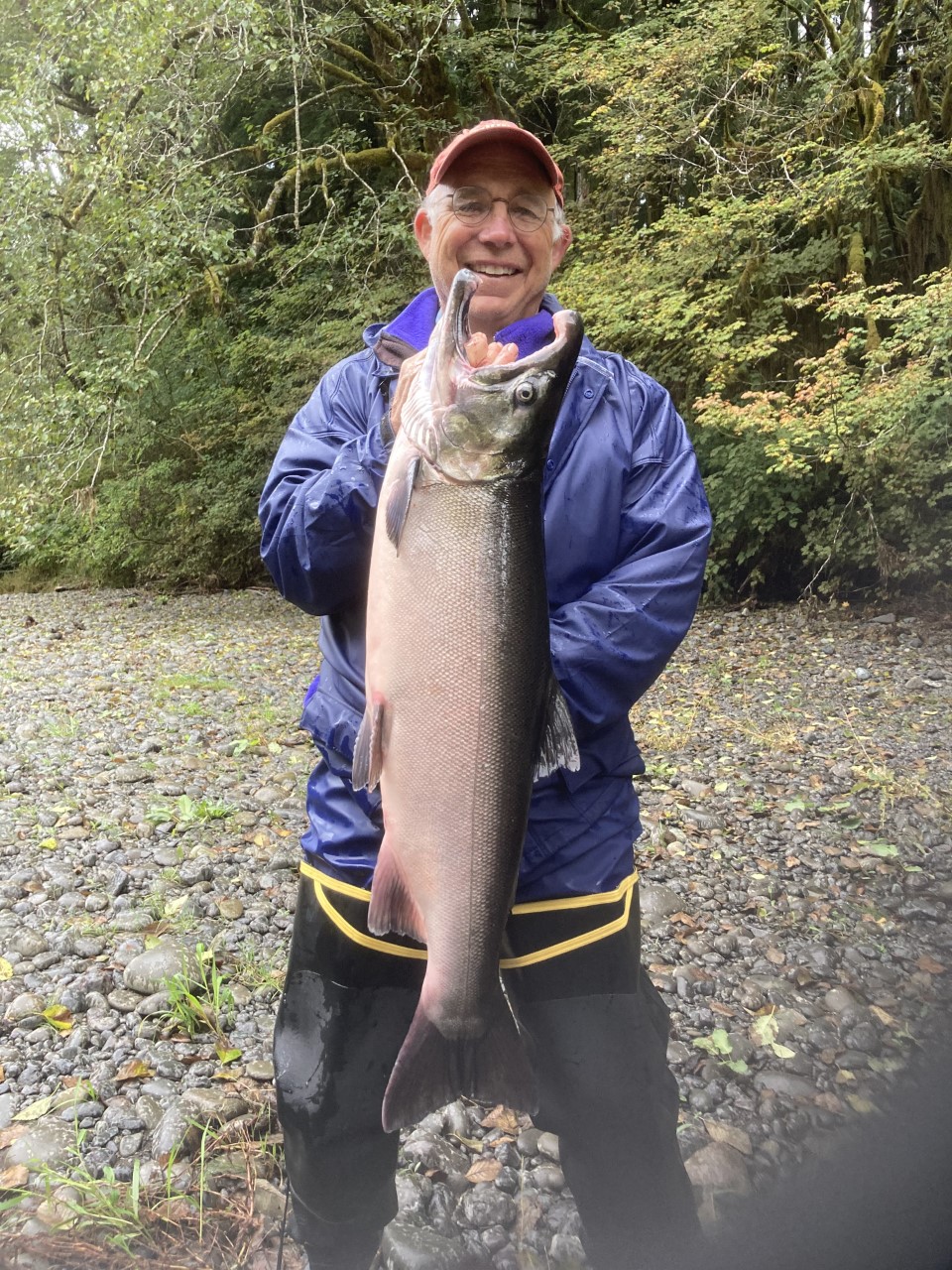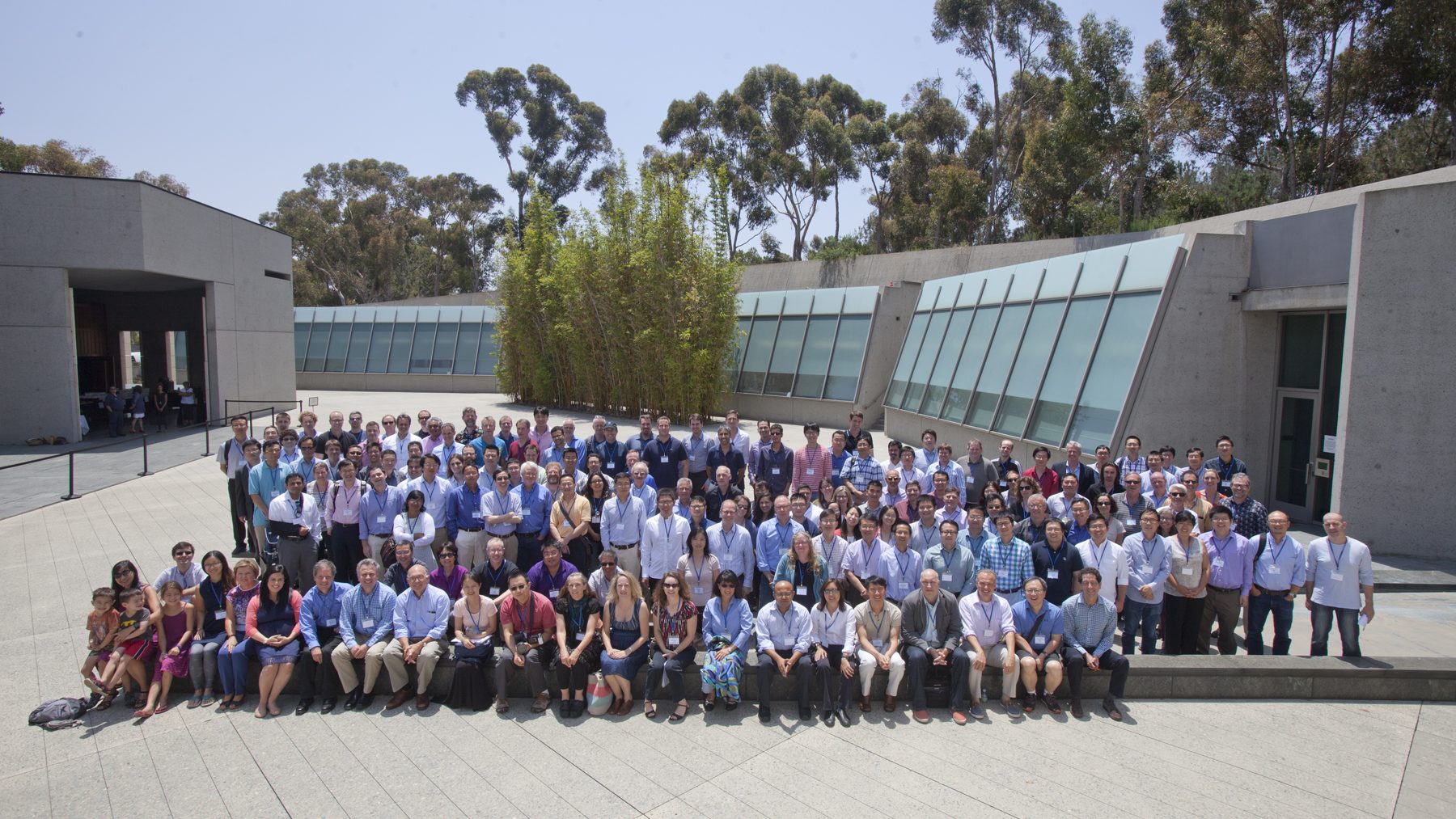
To Peter Schultz, science is like a Thanksgiving feast.
“It all looks so good,” he says, “that I always put too much on my plate.”
That wide-ranging appetite is evident in a career that has encompassed a dizzying array of scientific firsts, entrepreneurial ventures and leadership positions. Schultz has pioneered new frontiers in synthetic and chemical biology, trained over 300 scientists and published over 600 papers, led teams that have advanced over 20 medicines to clinical testing or FDA approval, and co-founded nine companies and research institutes. Most recently, he serves as the President and CEO of Scripps Research, where he is reimagining the relationship between academic research and the development of new medicines.
Asked to explain the wide breadth of his accomplishments, longtime colleagues and collaborators will cite his sharp intellect, boundless energy, irreverent creativity and famously over-the-top work ethic. But according to Harvard chemistry professor Christopher Walsh, one characteristic seems particularly important—a relentless insistence on making science relevant.
“He wants the work to matter,” says Walsh, “not just for himself—but for the people he trains, for the people he works with and for society.”
This drive goes back to Schultz’s undergraduate days at California Institute of Technology—and almost derailed his career before it got started.

“The most rewarding aspect of my career is the opportunity I have had to work with such a terrific group of students and colleagues—their enthusiasm, accomplishments and friendship have made it a wonderful journey.”
— Pete Schultz, PhD
Forging a Scientist
Schultz’s first year at Caltech was tough. He’d always had a knack for math and science, something he shared with his father, an MIT-trained engineer. But when he arrived at Caltech, he discovered he didn’t just need to keep up—he had to catch up. Freshmen started in advanced calculus, but his rural Ohio high school hadn’t even offered basic calculus. He kept his grades high by studying long hours, but by the end of his sophomore year was disillusioned with the relentless coursework. “I’d had two years of physics, two years of math, two years of advanced chemistry—a lot of facts and theory,” he says. “But I didn’t see the relevance of it all.”
After starting his junior year, Schultz took a leave, returned to Cincinnati, and took a job pouring metal and making castings in a sand foundry. Working in the sweltering heat, he realized Caltech was a relative walk in the park. But the experience was invaluable in broadening his perspective and realizing how fortunate he was with his educational and career opportunities to make a difference in the world.
Schultz found a way to start doing just that when he returned to Caltech for his junior year and signed up for a graduate-level physical organic chemistry class with a young professor named Peter Dervan. Among the students, Schultz stood out. “The class was mostly graduate students, but Pete totally dominated the intellectual direction,” recalls Dervan. When Schultz asked to work in his lab, Dervan paired him with a graduate student named Bill Hinsberg, and the three of them made several breakthroughs that were published in top chemistry journals. Based on the discoveries, Schultz won the award for outstanding undergraduate research. “I finally saw that I wasn’t just collecting knowledge, but that I could use that knowledge in very interesting ways,” says Schultz, holder of the L.S. “Sam” Skaggs Presidential Chair.
Really Hard Problems
As Schultz approached graduation, at the top of his class, Dervan encouraged him to apply to other schools for his PhD studies to broaden his experience. But Schultz had other ideas. He’d met a girl, a Caltech chemistry graduate student named Jocelyn Chupka, who would eventually become his wife, and he wanted to stay at Caltech.
Schultz powered through his graduate studies in physical organic chemistry, finishing his thesis research in two and a half years. Dervan told Schultz that since he had his PhD in the bag, he should try something out of his comfort zone. Part of Dervan’s lab team was exploring new ways to apply chemistry to probe and modify nucleic acids such as DNA. Dervan presented Schultz with what he called a “really hard problem”—finding a way to precisely cut DNA molecules. Schultz couldn’t resist the challenge, despite not having a background in biology. “Pete took to it like a duck to water,” says Dervan. “Before long he was really the one driving that part of my group forward.” After a year of searching, Schultz found a group of molecules from a family called polypyrroles that would bind and cut specific sequences of DNA. The project was the first time he would make a major advance by bridging different fields of science. It wouldn’t be his last.
By the time he received his PhD, Schultz was making a name for himself. He landed a postdoctoral fellowship at MIT with Christopher Walsh, a professor who was a leader in protein chemistry and mechanistic enzymology. In the lab, Schultz soaked in state-of-the-art techniques to modify proteins by altering the corresponding DNA sequences—a laborious process at the time that required DNA to be synthesized and sequenced by hand.
Schultz’s success as a grad student opened doors, but also complicated his early postgraduate career. Just as he was joining Walsh’s lab, the University of California, Berkeley offered him a job as an assistant professor—a rarity for newly minted PhDs. With Walsh’s blessing, he accepted the position.
“He was working in my lab, managing his own graduate students at Berkeley, and writing grants to get funding for his Berkeley lab,” Walsh says. “It was intense, but in typical Pete style, he pulled it off.”


Mining and Expanding Nature’s Diversity
After a year in Walsh’s lab, Schultz joined his Berkeley team full time. Over the next few years, they would make several major breakthroughs—two in particular that would have a lasting impact on his career trajectory. Kevan Shokat, one of the first graduate students to join the lab, recalls Schultz outlining his plans. “It was like looking 20 years in the future,” says Shokat, now a professor at the University of California, San Francisco. “He had this ability to do something so far out but make it concrete.”
The first project to come to fruition was an out-of-the-box idea for making new catalysts. Industry uses enzymes (nature’s catalysts) to catalyze specific chemical reactions used in manufacturing complex molecules but making enzymes with new specificities was a challenge. Schultz surmised that nature—specifically the immune system—could be a rich source of new enzymes. Our bodies produce an enormous variety of highly selective antibodies that bind and eliminate pathogens. Schultz realized that you could chemically program the immune system to make antibodies into enzyme-like catalysts that instead bind the fleeting transition states of chemical reactions. Using molecules that mimicked these transition states, Schultz’s team coaxed the immune system to make highly-selective catalytic antibodies. It was one of the very first examples of harnessing molecular diversity (in this case the billions of antibodies encoded by immune B cells) in the service of chemistry—a theme that would continue throughout his career.
It was a major breakthrough for Schultz and his young team. But they weren’t alone. Before he published his results, Schultz learned that a scientist named Richard Lerner from Scripps Research in La Jolla, California, had also developed catalytic antibodies. Worried he was about to get scooped, Schultz called Lerner, a far more established scientist. “He could have buried me,” Schultz recalls. “Instead, he said ‘Let’s figure out a way to work together.’” In 1986, Schultz and Lerner published their discovery jointly. It was a partnership that led to decades of collaboration and friendship that would eventually draw Schultz to Scripps Research.
During that time, Schultz’s team also pursued another unconventional idea—expanding the universal genetic code which is the fundamental blueprint of all life. In cells, proteins are made according to instructions from DNA and built from 20 basic amino acids. They carry out most of the processes of living cells. Schultz wanted to add to the list of amino acids used to build the protein backbone and thus engineer proteins with new chemical and biological properties. “Basically, we were asking, ‘What would life look like if God had worked on the seventh day and added additional building blocks to the genetic code?’” Schultz says.
In a 1989 paper in the journal Science, Schultz’s team announced their first success in making proteins with an expanded genetic code. They reprogrammed the cell’s protein factory to insert unnatural amino acids into proteins in a test tube. Based on these achievements and others, Schultz was given tenure in his third year at Berkeley and elected to the National Academy of Sciences at the young age of 36. But the real success would come later, after he moved to Scripps Research, where he figured out how to modify the protein-making machinery to add new building blocks to the genetic code of living cells and whole organisms—from bacteria to mice. This work effectively removed a constraint on life that had been in place for over a billion years. Since then, scores of amino acids with new structures and properties have been created and integrated into proteins. The technique is used around the world to study protein structure and function and to make new proteins for medicine, agriculture and industrial applications. “That one is still the most amazing to me,” says Shokat. “Pete ignored central dogma of genetics and added his own pieces to the puzzle.”
In addition to his laboratory advances at Berkeley, Schultz found success in the classroom, teaching courses ranging from undergraduate organic chemistry to advanced chemical biology. In 1992, he received the chemistry department’s prestigious Teaching Award. “I still have ex-students comment on how surprised they were that they enjoyed learning organic chemistry and what it can do,” he says.


The Right Combination
Beyond making his name in academic circles, Schultz’s research caught the attention of Alejandro “Alex” Zaffaroni, a renowned Silicon Valley biotech entrepreneur and biochemist. Zaffaroni thought Schultz’s ideas for finding a rich source of structurally diverse molecules and ‘fishing’ among them for a desired biological or chemical activity—what would come to be known as “combinatorial chemistry”—was a major new frontier in drug discovery. Reluctant at first, Schultz eventually gave in to the persistent Zaffaroni and in 1988 co-founded a company, Affymax Research Institute. It was through Zaffaroni that John Diekman, another co-founder of Affymax, met Schultz. “Alex told me there was a young chemist at Berkeley who was going to change how things were done in drug discovery,” says Diekman, now the managing partner of 5AM Ventures and chair of the Scripps Research Board of Directors. “Alex wouldn’t start the company until Pete signed on.”
It was the first of several companies Schultz and Zaffaroni would start together. Affymax specialized in using combinatorial chemistry to identify new medicines. Eventually, Affymax spun out another company, Affymetrix, which pioneered DNA chips (also known as microarrays), now a widely used technology in science and industry. In 1994, Zaffaroni and Schultz co-founded another company, Symyx Technologies, which drew from the ideas they’d developed at Affymax to develop and apply combinatorial methods to materials science. Schultz hired Isy Goldwasser, who’d recently graduated with a master’s in engineering from Stanford, as the first employee of Symyx. “When I first met him, Pete had this mischievous smile and he wanted to push the boundaries of what science could do,” says Goldwasser, who went on to lead the company for 17 years. “His scientific curiosity, boldness and optimism were infectious.”
Schultz developed methods for synthesizing and analyzing superconductors, phosphors and other solid-state materials thousands of times faster and cheaper than could be done by conventional methods in his lab at Lawrence Berkeley National Laboratory, a world-renowned materials research center. He also shopped around the idea of starting a spin-off company—but was met with skepticism by other scientists and venture groups. “I had no reputation in physics or materials science,” he says. “People kept telling me I was crazy.” He persisted and eventually secured more than $20 million to start Symyx. The company transformed the way new materials are discovered and the technologies it developed are now practiced by many in the materials community. Most recently, Schultz founded Wildcat Technologies, a combinatorial technology company that today is in the vanguard of making next-generation lithium-ion batteries for electric vehicles. Schultz also brought other concepts from biology to materials science including showing that quantum dots could be assembled into defined geometries using DNA as a template, a novel idea that garnered much interest in the nanomaterials space.

Bridging the Valley of Death
By the late 1990s, Schultz was busy managing two academic labs, involved in several companies, and had been named a Howard Hughes Medical Institute Investigator in recognition of his success in pushing the bounds of knowledge in biomedical research. In 1998, at the invitation of Richard Lerner, Schultz established a third academic lab at Scripps Research, focused on synthetic biology. There, he undertook a new effort with a young scientist he recruited named Floyd Romesberg to create another synthetic DNA base pair, adding a third new letter to the genetic alphabet. Schultz and Lerner continued to collaborate over the years, and in 1994 shared the Wolf Prize in Chemistry for their pioneering work on catalytic antibodies. Soon, Lerner had a new proposition. He was friends with the president of the Swiss pharmaceutical company Novartis, which planned to start a genomics institute in California. They wanted Schultz to run the institute and had committed $100 million to the project. In 1999, Schultz moved his entire Berkeley team to Scripps Research to continue his academic research while he launched the Genomics Institute of the Novartis Research Foundation (GNF) down the street. Initially, GNF focused on using genomic technologies to study diseases at the molecular level. That early research paved the way to applying the high-speed combinatorial technologies Schultz had developed to screen large libraries of compounds for new medicines, search genetic libraries for new drug targets, and screen for protein crystals with structural biologist Raymond Stevens.
At GNF, Schultz took laboratory automation to an entirely new level with the help of Robert Downs, a chief engineer at General Motors who’d been Schultz’s roommate at Caltech. At GNF, Downs designed life sciences screening facilities that employed the same robotics used on automotive assembly lines—technology now used by most pharma companies. This allowed the GNF teams to study diseases and look for new drugs at an unprecedented scale and speed. “Pete had an appreciation for what engineering could do for the pharmaceutical industry,” says Downs. “He knew that to move the needle you need brilliant ideas, but you also need to operate at scale.”
GNF was so successful that Novartis injected more than $1 billion during Schultz’s tenure as director. Since it launched, the institute under Schultz’s leadership originated more than 15 drugs currently in clinical trials with five approved for treating cancer, autoimmune diseases and neurological disorders.
While Schultz ran GNF, he continued to satiate his scientific curiosity through his academic lab at Scripps Research—as he does today. The team has extended its use of synthetic biology to explore the origins of DNA genomes, mitochondria and other key evolutionary advances. The lab also expanded into disease biology, with projects ranging from new cancer therapies to regenerative medicines. Schultz pioneered the concept of using small drug-like molecules to control the expansion and fate of endogenous “adult” stem cells that have the capacity to make many of the different cell and tissue types in our bodies. This spurred many collaborations with GNF and Scripps Research scientists and led to drug candidates that make new chondrocytes, oligodendrocytes, hematopoietic stem cells, and heart and lung cells to repair and regenerate tissues damaged by aging or disease. The problem was that Schultz’s lab didn’t have the resources or expertise to get the ideas far enough along for clinical testing. It was an all-too-common tale. Academic labs are at the forefront of deciphering biological mechanisms of diseases. But due to disconnects among academic institutions and pharmaceutical companies, great ideas often fail to launch. The phenomenon even has a name, the “Valley of Death.” Schultz saw a better way to do things.
In 2012, after leading GNF for over a decade, he started the California Institute for Biomedical Research (Calibr), a nonprofit drug discovery institute located near Scripps Research. With Calibr, Schultz sought to establish an infrastructure that could translate promising ideas from academic research into early-stage clinical testing—a bridge over the Valley of Death. Calibr initially launched drug discovery programs based on advances from Schultz’s own academic lab, but also worked with outside academic labs, pharmaceutical companies and nonprofit foundations such as the Bill & Melinda Gates Foundation. Arnab Chatterjee, who worked with Schultz at GNF and later joined Calibr, said he was attracted to the nonprofit’s focus on global health and on the breadth of expertise required to translate academic discoveries into clinical therapies. “Pete embraces scientists from all sorts of backgrounds,” says Chatterjee, the vice president of medicinal chemistry at the institute. “At Calibr, he brought together people with all types of expertise, which has made a huge difference in the science.”
Since its launch, Calibr has developed a number of innovative therapies—six have already entered clinical trials, and seven more will enter the clinic in the next two years. These include drugs for osteoarthritis, Parkinson’s disease, cancer, fibrosis, infectious diseases and, most recently, an antiviral for COVID-19. The institute has also conducted its own early-stage clinical trials, a rarity for nonprofit research institutions. Matt Tremblay, who helped launch Calibr and has since become its chief operating officer, said Schultz’s passion for finding new medicines fueled Calibr’s esprit de corps. “I kept an email from Pete taped to my desk to remind me that patients were waiting,” says Tremblay, who is also the chief operating officer of Scripps Research. The note read: “It’s not about money—it’s about time. We need to move as fast as humanly possible—or faster.”
In 2016, Schultz was named CEO of Scripps Research and has since merged Calibr into Scripps Research as the institute’s drug discovery division. Around the same time, the Scripps Research Translational Institute, focused on individualized medicine and digital medicine, also joined Scripps Research. Merging the three institutes is part of Schultz’s vision for bridging the gap between curiosity-driven science that seeks to understand how nature works and applied research that translates those discoveries to medical advances that directly impact patients. At the same time, Schultz is using his entrepreneurial experience to build a new business model for Scripps Research that provides unrestricted resources to sustain and grow its science.
John Diekman says Schultz’s vision for the institute is unique among academic institutions but a natural extension of his long-running quest to use science to make a difference.
“Pete wants to see patients survive and live a healthy life because they are being treated with a Scripps Research compound,” Diekman says. “Based on his track record of accomplishments, that’s a good thing for all of us.”